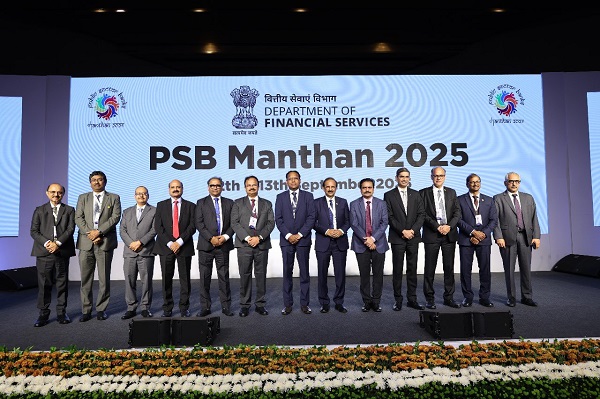.png)

By Sanjay Mansabdar
Sanjay Mansabdar teaches finance at Mahindra University in Hyderabad. He brings 30+ years of global experience in derivatives trading and product design, including senior roles at J.P. Morgan, Bank of America, and ICICI Securities.
September 17, 2025 at 6:09 AM IST
The Securities and Exchange Board of India has never been short of ambition when it comes to taming the unruly world of equity derivatives. For years, its interventions have multiplied, with new frameworks, limits, and surveillance designed to bring its version of discipline to one of the most active markets in the world. But the latest regulatory strike, directed against global arbitrageurs such as Jane Street, has produced a consequence that no amount of rule-making can disguise: the crushing of implied volatility in Nifty options.
The opacity of retail data has always been an obstacle. Only exchanges and the regulator know the granular details of who trades what, and when. Yet piecing together option prices and market structure gives a revealing picture. What has emerged since July is a market where volatility has all but drained away. The causes lie as much in retail behaviour as in the forced exit of sophisticated arbitrageurs.
Retail Puzzle
In theory, retail investors could mirror textbook strategies. A covered call, for instance, marries long exposure to the Nifty with short out-of-money calls to earn premiums. A cash-secured put allows a trader with idle liquidity to sell OTM puts while being fully prepared to buy if needed, for instance, in stock options. These are conservative approaches, blending equities with derivatives, and they require patience across weeks or months.
But patience is a rare commodity. Anecdotal evidence from Indian exchanges, echoed by empirical research in US markets, shows retail activity to be disproportionately short-term. Participation spikes in the final days of weekly or monthly expiries, then fizzles out. Zero-day-to-expiry options have become the playground of the masses, echoing the phenomenon in the US, where retail accounts for nearly half of all trades in instruments created at the open and extinguished by the close.
This short horizon narrows the field to two impulses for retail traders. One is the ‘lottery ticket’ bet, buying cheap short-dated calls or puts in the hope that a correctly forecasted market move multiplies the initial outlay many times over. The other is the ‘free money’ temptation, selling near-expiry options that decay rapidly, pocketing the premium if the market closes as expected. Which of these behaviours dominates is crucial because it has significant market consequences.
The evidence is in the numbers. Implied volatility, that ‘unknown’ in the famous Black Scholes formula, signals whether buyers or sellers are dictating prices. Demand for options drives it higher; supply drags it down. If retail traders were overwhelmingly buyers, SEBI’s clampdown on arbitrageurs—typically the counterparty sellers—should have created a shortage of supply. Residual retail demand would then have forced implied volatility up.
Yet the opposite has occurred. From an average of 14% in the first six months of the year, short-dated Nifty implied volatility has slumped to below 10% since July, resting around 8.5% in mid-September. While Operation Sindoor-related volatility has some role in lifting the Jan-June data, the longer pre-event time frame averages away most of this effect. Tariff-driven anxieties were present across both periods. The conclusion is clear: Indian retail traders are not hopeful buyers of lottery tickets but sellers of fast-decaying options.
This explains why opportunities for arbitrageurs were so rich. Systematic selling by retail, indifferent to valuation, distorted option prices and left profitable mispricings that global firms exploited.
The consequences extend far beyond the option chain. Markets where option sellers dominate—such as Japanese Government Bond derivatives—see not only mispricing but also the suppression of actual volatility in the underlying asset. Trades designed to scalp whatever little movement exists end up dampening that movement further. In India, this dynamic threatens to ensnare the Nifty and Sensex, both of which have weekly expiries and are highly sensitive to derivatives flow.
Regulators want options to be used only for hedging. Yet hedging has value only when volatility exists. Without movement in the underlying, who requires protection? Academic research has shown that successful derivatives markets thrive when they hedge genuine risks. Kill volatility, and the rationale for the market disappears.
Implied Future
This raises a larger concern. Two great engines of liquidity in Indian equity derivatives are simultaneously being pushed out. Retail traders, though still active, may soon find their instruments curtailed by further restrictions. Arbitrageurs, meanwhile, are already retreating under regulatory glare. If the trend persists, India could face a hollowing out of what was once the world’s most liquid options market.
Lower volumes and diminished volatility impair price discovery, hamper hedging by institutions, and weaken the credibility of the market as a whole. What emerges then is a sobering lesson in unintended second-order effects. By seeking to prevent excesses, regulators may be extinguishing the very features that give derivatives markets purpose.
Volumes are already under strain, and liquidity may deteriorate further. The implied direction, much like the volatility surface itself, is unmistakably downward. We must ask a blunt question: if volatility is killed, and if hedging becomes redundant, who will need options at all?




